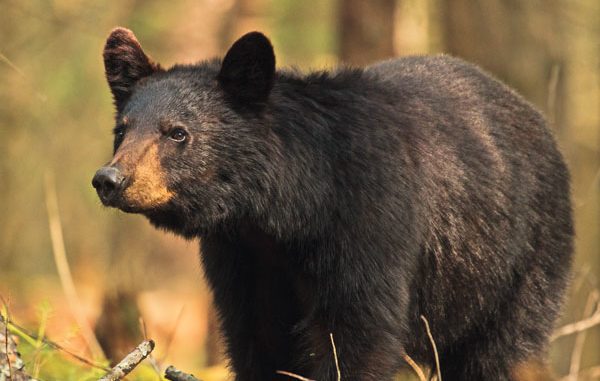
Two weeks this month is all Upstate bear hunters have to put a tag on their quarry; here’s how they do it.
Tony Cantrell has killed two bears in 42 years of hunting.
Dennis Chastain has killed a bear just about every year for the past 30.
Neither could be any happier.
“I haven’t hurt the bear population, that’s for sure,” Cantrell said. “But I’ve had 42 years of fun, and that’s what it’s all about.”
Cantrell, of Walhalla, is one of roughly 1,000 hunters who participate in South Carolina’s 6-day dog or “party hunt” for black bears.
Chastain, of Pickens, is one of a relative handful of people who still-hunt for bears in the far mountain reaches of the Upstate.
Neither could stand to miss a day in the woods.
“We only get to hunt six days out of the year, so it’s important to take full advantage of the opportunity,” Chastain said.
This opportunity — essentially the final two weeks of October — is a cherished period.
Daylight hours dwindle more with each passing day, a chill lingers longer in the air and the leaves of the Upstate’s hardwoods are turning yellow and red.
And acorns are pelting the forest floor like manna from heaven.
As hunters scout and gather and formulate plans for the impending season, bears are focused on one thing and one thing only: food.
“When it comes to bears and food, there’s no such thing as too far or too much trouble,” Chastain said. “For them, it’s all about packing on the calories; this is not optional. They’re going to be asleep for 2½ months, so they’ve got to lay on the calories to take them through the winter and also for the birthing and feeding of cubs if they’re a sow.”
In most cases, this means that black bears are honing in on acorns, specifically white oak acorns.
And Chastain is busy honing in on white oak trees himself.
“If a bear is within a mile or two of a good stand of white oaks dropping acorns, he will know about them,” Chastain said. “The thing that allows us to still hunt bears is that they establish a daily routine of hitting those areas a minimum of two or three times a day.”
Chastain passed on a smallish bear last season and wound up not filling his tag for the first time in years. He attributed his lack of success to another “tough” year for hard mast — and this fall’s forecast isn’t much better.
“We’re now in a third year of near-total acorn crop failure in the ‘true’ mountains,” Chastain said. “Last year, there were tons of acorns once you got south of Highway 11. But a bear had to cover a lot of territory to get his calories. Even though sign was hot and heavy, many bears were covering three miles at night to get sufficient calories.”
Since still hunting is based on food, such “spotty” mast conditions can prove quite beneficial to still hunters who are fortunate enough to locate productive white oak stands. Essentially, if a hunter can locate a white oak hot spot, the bears will be there, too.
“On the other hand, if acorns are everywhere, the bears are going to be scattered,” said Richard Morton, a wildlife biologist in the Clemson office of the S.C. Department of Natural Resources. “That makes them much harder to pinpoint.”
Since joining the SCDNR, Morton has witnessed tremendous growth in bear hunting as well as the Upstate’s bear population. In 1988, when Morton was new to his job, hunters bagged a total of four bears. Two seasons ago, hunters killed a record 98 bears.
Early population estimates typically ranged from 200 to 300 bears in the mountains of Greenville, Pickens and Oconee counties. Today, Morton says he’s probably underestimating when he declares that around 1,000 bears roam the Upstate.
“Based on the number of nuisance calls we’ve been getting, it’s probably a lot more,” Morton said.
Pickens County normally produces the most hunter success, thanks primarily to the 34,000 hunting-friendly acres in the Jocassee Gorges and a network of access roads.
Neighboring Oconee County boasts a lot more public hunting land, with more than 80,000 acres of U.S. Forest Service property alone, but access is considerably more limited, and the terrain often more remote and steep.
The heaviest two bears ever killed in South Carolina, including the all-time best 596-pound bruin taken by Joe Lawrence of Tiger, Ga., in 2002, both came from Oconee, however, where in the western part of the county cornfields and apple orchards have proven to be valuable supplements to the black bear’s diet.
In Pickens County, Chastain relies more on acorns and hickory nuts as his primary bear attractants.
“Hickories don’t occur in significant numbers, but they do tend to occur in colonies, typically at the head of a hollow,” Chastain said. “And even though hickory nuts are extremely hard, they’re the richest in oil, and therefore the densest source of calories.
“There are some bears that just love hickory nuts and will eat them almost exclusively. It tends to be bigger, older bears because it takes a good bit of jaw power to crack them.”
After he locates either an attractive white oak or hickory stand, Chastain analyzes bear sign not unlike a crime scene investigator.
“A lot of people are intimidated by the prospect of bear hunting, but it’s very much like deer hunting in that you go in and locate sign, then wait on them to come by,” Chastain said. “And bears are not bashful about leaving sign. There is never any doubt where a bear has set up housekeeping. The leaves will be raked up in piles, and there will probably be plenty of scat.”
The first step, Chastain says, is to determine whether you have discovered a “huntable” bear and not a sow with cubs.
“There’s nothing worse than investing a day or two hunting an area and finding out that it’s a sow with a couple of cubs,” Chastain said.
Telltale signs include smaller scat that resembles soft ice cream, and holes and scratch marks that have been left behind by playful cubs.
“If you spend a few minutes, you can readily tell if cubs have been playing around there,” Chastain said.
The second step is to determine how you’ll approach the area on
hunting day.
“You don’t want to approach the same way the bear does because you’re leaving your scent everywhere,” Chastain said. “And you’ve got to be there early. In fact, there’s a good chance that your bear may already be there when you arrive. I’ve killed a few bears in the first five minutes of a hunt, and sometimes, I’ve even encountered a bear in the dark on my way to an area, so it’s a good idea to get there early.”
Chastain hunts exclusively on the ground, for two reasons: it allows him to move quickly and quietly if conditions aren’t right, and his line of sight is considerably greater than if he was in a tree stand because leaves on trees block his view.
“The bottom line is this — the primary difference between bear and deer is that there’s far less room for error in bear hunting,” Chastain said. “If you miss that old mature buck in October, you’ve still got two more months to try again. With bears, you’ve got six days. That underscores the need to put plenty of thought into where your best place to be is.”
During the 6-day party hunt with dogs, which is always conducted the week after the still hunt, the best place to be is in close proximity to a good dog.
“It’s all about getting up early and having a good strike dog and trail dogs,” said Robert Chapman of Pickens, a veteran bear hunter and president of the South Carolina Bear Hunters Association.
The dog hunt is largely a social affair, with many hunting parties continuing long-held traditions by converging on cabins or camps and sharing fellowship, food and tall tales for the week.
In many instances, friends and hunting acquaintances from nearby states such as Georgia, North Carolina and Tennessee join in on the fun, often bringing groups of eager hounds. The hounds in most cases are equipped with radio collars that will enable the owners to monitor their movements during the hunt and assist in rounding them up at hunt’s end.
But first, there has to be a beginning.
“A good dog will let you know right away where a bear has crossed a road or trail,” Chapman said.
Once this occurs, human help is crucial.
“You want the dogs going the way the bear’s going, not the way he’s already been,” Chapman said. “That’s where the human part comes in — you need to determine which way the bear’s going by prints or by leaves or by something as small as which way a blade of grass is turned.”
Then comes the fun part — the unleashing of the dogs, which tend to be either Plott, Walker or Redbone hounds. The melody that ensues is what fuels the fever in many hunters.
“People see me sometimes in the woods and I won’t even have my gun,” says Cantrell, who killed a 505-pound bear in Oconee County in 1998. “I just love to hear the dogs.”
Keeping the dogs within hearing range becomes a primary quest. The trailing of a bear before it climbs a tree can be a relatively short half-mile jaunt or a day-long affair that covers untold miles and culminates in the heart of a remote hollow.
Both scenarios can be rewarding.
“It’s a calling — you just can’t help it,” Chapman said. “Some guys get thrills by sitting in the truck. Others get thrills by running through the woods. I prefer the latter, but I’m 60 now, so my mind outruns my legs sometimes. But I still love it, always will. The bottom line is if you don’t love it, you’re not going to be a successful bear hunter.”

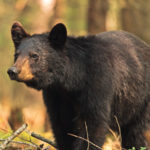
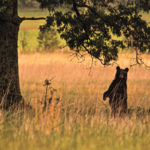
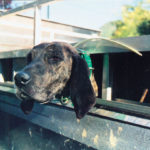
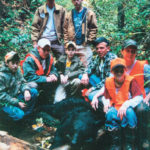
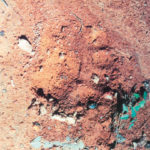
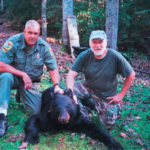
Be the first to comment